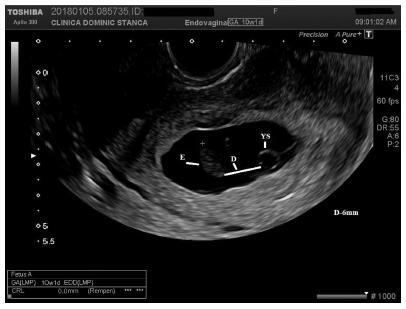Summary
Revista Brasileira de Ginecologia e Obstetrícia. 2019;41(10):597-606
To evaluate conditions associated with stillbirth (SB), and possible trends related with it, in a maternity hospital school in the North zone of São Paulo.
An observational, cross-sectional study conducted at the Hospital Maternidade- escola de Vila Nova Cachoeirinha with 1,139 SBs in the period of 2003 to 2017. Cases of intermediate SB (ISB) (weight between 500 and 999 g) and late SB (LSB) (weight ≥ 1,000 g) were compared. We evaluated clinical data, laboratory tests, and fetal and placental studies. Data were stored in Windows Excel (Microsoft Corp., Redmond, WA, USA) worksheets, according to which graphs and tables were constructed. We used the statistical software SPSS for Windows version 18.0 (SPSS In., Chicago, IL, USA), estimating the prevalence ratio (PR) and odds ratio (OR), considering the 95% confidence interval (95% CI).
The general SB rate was 11.9%, and the in-hospital SB rate was 2.8%. Pregnant women younger than 16 years of age were more likely to have ISB (OR 0.32, 0.15- 0.76), while patients older than 40 years old had a higher chance of LSB (PR 0.85, 0.72- 0.99). A total of 25.7% of the general population did not have prenatal care, and 77.1% of the cases presented fetal death at admission. The cases of ISB had a statistically significant association with home birth (OR 0.61, 0.46-0.80). Cesarean section was performed in 16.1% of the subjects, and misoprostol was the most used method for induction. Necropsy and placental study of the fetuses were performed, respectively, in 94.2% and 97.3% of the cases. Associated causes were not identified in 22.1% of the cases, and the main causes identified were amniotic sac infections (27.9%), fetal malformations (12.5%), placental abruption (11.2%), hypertensive syndromes (8.5%), and maternal syphilis (3.9%), the latter with an increasing trend.
Among the factors associated to SB were: hypertensive syndromes, amniotic sac infections, fetal malformations, placental abruption and syphilis. There was a growing trend in the number of cases of syphilis, which translates an alert. Diagnostic limitations justify indeterminate causes.
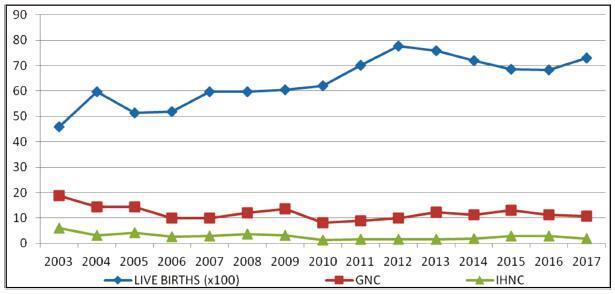
Summary
Revista Brasileira de Ginecologia e Obstetrícia. 2019;41(10):588-596
To assess the daily dietary intake and energy contribution of ultraprocessed foods among women who are positive and negative for the human immunodeficiency virus (HIV) during pregnancy.
This case-control study included 77 HIV-positive and 79 HIV-negative puerperal women between 2015 and 2016. The socioeconomic and maternal demographic data were assessed, and a food frequency questionnaire (FFQ) adapted for pregnant women was applied. The Fisher exact test and the Mann-Whitney test were applied to detect differences between the groups. Linear regression was used to assess the associations between the intake of ultra-processed food and energy, macro- and micronutrients, with values of p < 0.05 considered significant.
The HIV-positive group was older (p< 0.001) and had lower income (p= 0.016) and level of schooling (p< 0.001) than the HIV-negative group. Both groups presented similar average food intake: 4,082.99 Kcal/day and 4,369.24 Kcal/day for the HIV-positive and HIV-negative women respectively (p= 0.258).The HIV-positive group consumed less protein (p= 0.048), carbohydrates (p= 0.028) and calcium(p= 0.001), andmore total fats (p= 0.003). Ultra-processed foods accounted for 39.80% and 40.10% of the HIV-positive and HIV-negative groups’ caloric intake respectively (p= 0.893). The intake of these foods was associated with a higher consumption of carbohydrates (p < 0.001), trans fat (p= 0.013) and sodium (p< 0.001), as well as lower protein (p < 0.001) and fiber intake (p= 0.022).
These findings demonstrate that the energy consumption and ultraprocessed food intake were similar in both groups, which reinforces the trend toward a high intake of ultra-processed food in the general population. The intake of ultraprocessed food was positively associated with the consumption of carbohydrates, trans fat and sodium, and negatively associated with the consumption of protein and fiber.
Summary
Revista Brasileira de Ginecologia e Obstetrícia. 2019;41(10):581-587
To evaluate the association between the upright and supine maternal positions for birth and the incidence of obstetric anal sphincter injuries (OASIs).
Retrospective cohort study analyzed the data of 1,728 pregnant women who vaginally delivered live single cephalic newborns with a birth weight of 2,500 g. Multiple regression analyses were used to investigate the effect of the supine and upright positions on the incidence of OASIs after adjusting for risk factors and obstetric interventions.
In total, 239 (13.8%) births occurred in upright positions, and 1,489 (86.2%) in supine positions. Grade-III lacerations occurred in 43 (2.5%) patients, and grade-IV lacerations occurred in 3 (0.2%) women. Supine positions had a significant protective effect against severe lacerations, odds ratio [95% confidence interval]: 0,47 [0.22- 0.99], adjusted for the use of forceps 4.80 [2.15-10.70], nulliparity 2.86 [1.44-5.69], and birth weight 3.30 [1.56-7.00]. Anesthesia (p<0.070), oxytocin augmentation (p<0.228), shoulder dystocia (p<0.670), and episiotomy (p<0.559) were not associated with the incidence of severe lacerations.
Upright birth positions were not associated with a lower rate of perineal tears. The interpretation of the findings regarding these positions raised doubts about perineal protection that are still unanswered.

Summary
Revista Brasileira de Ginecologia e Obstetrícia. 2019;41(9):555-563
To determine the prevalence of sexual dysfunction and its associated factors in pregnant women.
A descriptive, cross-sectional study including 262 pregnant women aged 18 years or older with gestational age between 10 and 35 weeks. Women with urinary tract infections and conditions of gestational risk were excluded. The Pregnancy Sexual Response Inventory (PSRI) questionnaire was used. We performed a univariate descriptive analysis, and comparisons between the mean values of the sexual function domains were made using the Student t-test. The chi-squared test was used to determine the association between the independent and dependent variables. The prevalence ratios, with their respective 95% confidence intervals, were also estimated, and a multivariate analysis was performed.
A total of 64.9% of women reported a decrease in the frequency of sexual activity during pregnancy. Slightly more than half of the women (50.8%) were satisfied, and arousal was reported as excellent/good by 30.5% of them. The frequency of sexual difficulties/dysfunctions increased with pregnancy, rising from 5.7% to 58.8%, and pain during sexual intercourse was reported by 45.8% of them. Having higher education degree decreased the chance of being sexually dissatisfied by 50%. The total PSRI score showed a significant decrease from the prepregnancy period (mean score = 89.8, “excellent”) to the pregnancy period (mean score = 59.2, “good”).
The mean sexual function score during pregnancy was classified as good, although most pregnant women reported at least one type of alteration in the sexual function domains, and the report of dissatisfaction was more frequent in women with lower schooling.
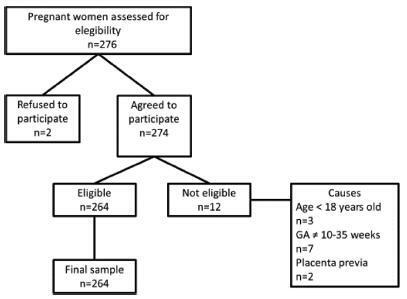
Summary
Revista Brasileira de Ginecologia e Obstetrícia. 2019;41(9):548-554
To evaluate the existence of an association between ultrasound findings and epidemiological and clinical factors using results obtained from the EHP-30 questionnaire in women with ovarian endometriosis.
A cross-sectional observational study was performed between July 2012 and May 2015, in which patients with chronic pelvic pain suggestive of endometrioma, as indicated by the results from a transvaginal pelvic ultrasonography, completed the standardized Endometriosis Health Profile - 30 (EHP-30) questionnaire to access quality-of-life scores before beginning treatment for endometriosis. A total of 65 patients were included. The data was analyzed in the statistical program IBM SPSS Statistics for Windows, Version 22.0 (IBM Corp., Armonk, NY, USA) for the comparison of data through linear multiple regression.
The suitability of the linear regression model was confirmed by the histogram of the dependent variable and the residue distribution plot, confirming the trend of linearity as well as the homogeneous dispersion of the residues. The mean age of the patients was 39.7 ± 7.1 years old. Themajority was Caucasian (64.5%), had completed higher education (56.5%) and was nulligravida (40.3%). Infertility was present in 48.4% of the patients studied. Out of the total sample, 80.6% of the cases were symptomatic and complained mainly of acyclic pain, 79% of dysmenorrhea, and 61.3% of dyspareunia. This reflects the negative influence of endometriosis on the quality of life of patients with this disease.
Dyspareunia and acyclic pain were independent factors of correlation with high scores in the EHP-30 questionnaire, reflecting a worse quality of life.
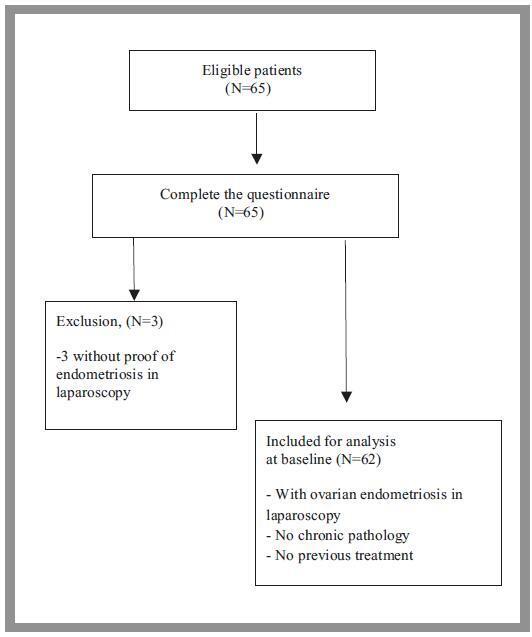
Summary
Revista Brasileira de Ginecologia e Obstetrícia. 2019;41(9):539-547
To describe a population of pregnant women diagnosed with toxoplasmosis and their respective newborns, describing the hospital protocol for treatment and follow-up.
Retrospective cohort of pregnant women with acute toxoplasmosis infection and risk of transplacental transmission who were sent to the Fetal Medicine Group of Hospital de Clínicas de Porto Alegre (HCPA) between - January 1, 2006 and December 31, 2016. All patients with confirmed disease were included. The diagnostic protocol and treatment were applied; a polymerase chain reaction (PCR) analysis of the amniotic fluid was used to diagnose toxoplasmosis and determine the treatment. The newborns were followed up at the pediatric outpatient clinic specializing in congenital infection. The patients who were not followed up or were not born in the HCPA were excluded.
A total of 65 patients were confirmed to have gestational toxoplasmosis; 40 performed amniocentesis, and 6 (15%) were identified as having positive PCR in the amniotic fluid. In five of those cases, this result associated with the gestational age defined the triple therapy during pregnancy, and in one case, it defined the monotherapy (advanced gestational age). A total of 4 of these newborns were treated from birth with triple therapy for 10months, 1 was not treated (due to maternal refusal), and 1 progressed to death within the first 54 hours of life due to complications of congenital toxoplasmosis. Of the 34 remaining cases with a negative PCR, 33 were treated with monotherapy and 1 was treated with triple therapy (ultrasound findings); of these children, 9 (26.5%) presented negative immunoglobulin G (IgG), 24 (70.6%) presented positive IgG (but none presented positive immunoglobulin M [IgM]), and 1 (2,9%) presented alterations compatible with congenital disease and started treatment with the triple therapy soon after birth. Out of the total sample of 60 patients, among the 25 who did not perform amniotic fluid PCR, 5 were treated with triple therapy (ultrasound findings/prior treatment) and 20 patients were submitted to monotherapy; only two newborns underwent treatment for congenital toxoplasmosis. Among the 65 cases of gestational toxoplasmosis, 6 (9,2%) children had a diagnosis of congenital toxoplasmosis, and 2 patients with triple therapy felt severe adverse effects of the medications.
The present study suggests that research on PCR screening of the amniotic fluid may be useful to identify patients with a higher potential for fetal complications, who may benefit from the poly-antimicrobial treatment. Patients with negative PCR results must continue to prevent fetal infection with monotherapy, without risk of fetal or maternal impairment.
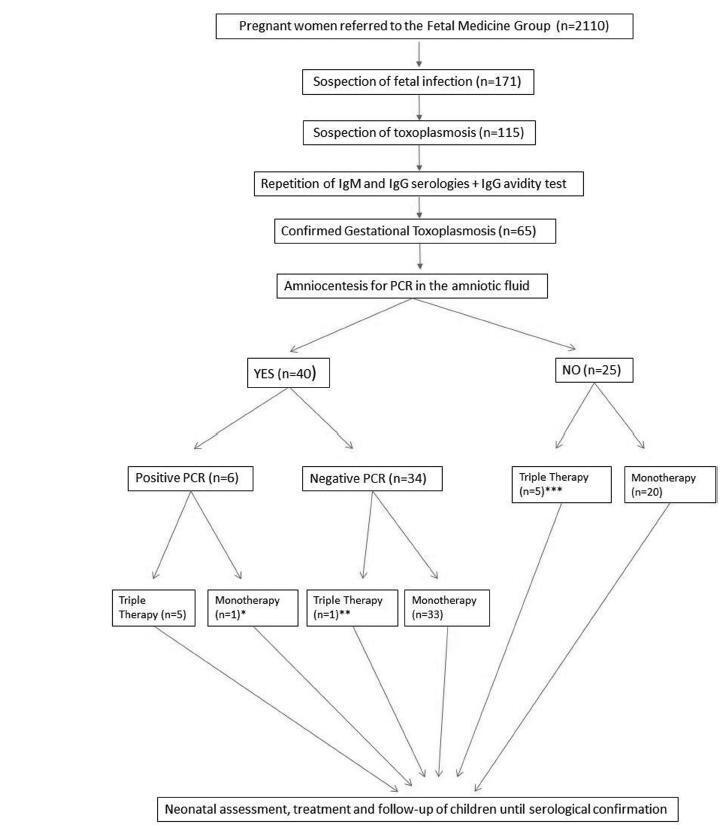
Summary
Revista Brasileira de Ginecologia e Obstetrícia. 2019;41(9):531-538
To determine the effect of treadmill walking on maternal heart rate (MHR) and cardiotocographic parameters (basal fetal heart rate [FHR], active fetal movements [AFM], number of accelerations and decelerations, and short-term variation [STV] and long-term variation [LTV] of fetal heart rate) in pregnant women at 36 weeks.
A nonrandomized, open clinical trial involving 88 healthy pregnant women submitted to moderate intensity walking and computed cardiotocography in 3 20- minute periods (resting, treadmill walking, and postexercise recovery).
The mean FHR decreased during walking (resting: 137 bpm; treadmill: 98 bpm; recovery: 140 bpm; p<0.001), with bradycardia occurring in 56% of the fetuses in the first 10minutes of exercise, and in 47% after 20minutes. Bradycardia was not detected in the other phases. The mean STV and HV were 7.9, 17.0, and 8.0 milliseconds (p<0.001) and 7.6, 10.8 and 7.6 bpm (p=0.002) in the resting, walking and recovery phases, respectively. Themean number of fetalmovements in 1 hour was 29.9, 22.2 and 45.5, respectively, in the 3 periods (p<0.001). In overweight/obese women, the mean FHR was lower (p=0.02). Following the logistic regression analysis, two variables remained significantly associated with bradycardia: maternal fitness in the 28th week of pregnancy (protective effect) and maternal weight (increased risk).
In healthy fetuses, physical exercise proved to be safe, since, although FHR and AFM decreased during treadmill walking, an increase in SVT and LTV was observed.
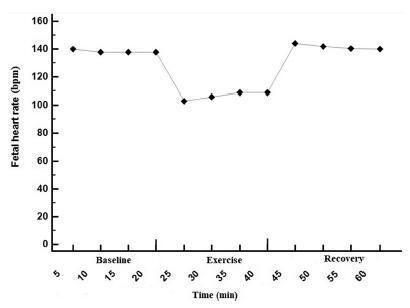
Summary
Revista Brasileira de Ginecologia e Obstetrícia. 2019;41(9):525-530
The etiology of embryonic demise is multifactorial, with chromosomal abnormalities being the most common (40%). The purpose of the present study is to evaluate the correlation between a serum biomarker, progesterone, and an ultrasonographic parameter, the distance between yolk sac and embryo (DYSE) in assessing the prognosis of pregnancy outcome in the 1st trimester.
The present study is a prospective case-control analysis that includes 2 groups of patients: 81 patients with first-trimester normal evolutive pregnancy and 89 patients with embryonic demise, all of the patients having between 6 and 11 weeks of amenorrhea. Endovaginal ultrasonographic exploration was performed to evaluate the distance between the lower pole of the embryo and the yolk sac. From each subject enrolled in the study, 20ml of blood was collected for progesterone serum level measurement.
Regarding the DYSE in the case group, lower values were observed compared with the control group, the difference being statistically significant. In the statistical analysis of serum progesterone values, statistically significant differences were observed between the 2 groups (p<0.05).
The DYSE has a high positive predictive value in identifying pregnancies with potentially reserved outcome, with the present study demonstrating that a DYSE<3mm causes an unfavorable evolution of the pregnancy. Low serum levels of progesterone are associated with an increased rate of nonviable embryos. The correlation between these two parameters increases the effectiveness of screening methods in prenatal monitoring and improves the diagnostic methods for the firsttrimester pregnancies whose outcome potential can be reserved.
